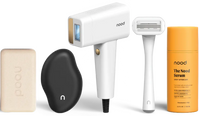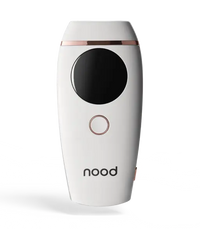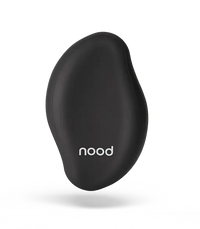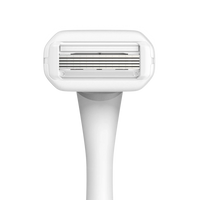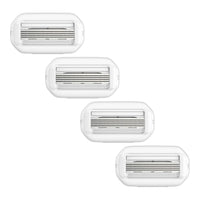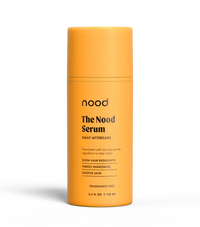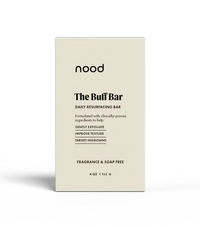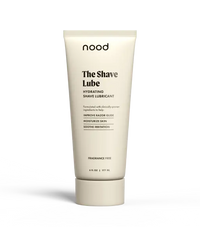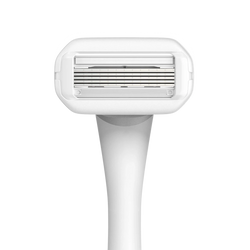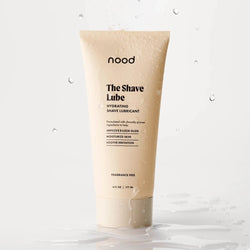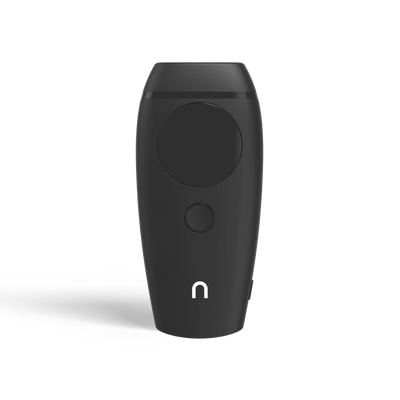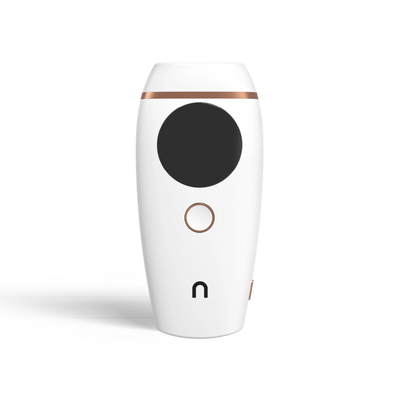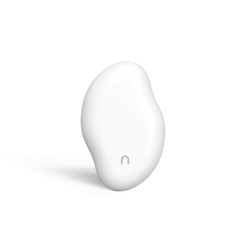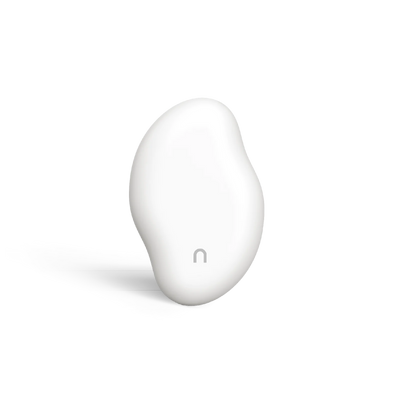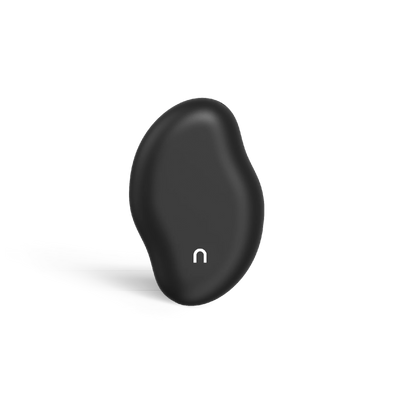
How to Permanently Remove Hair: 5 Options That Actually Work
The best ways to permanently remove hair are:
- IPL (intense pulsed light therapy)
- Laser hair removal
- Electrolysis
- Prescription creams
- Waxing (semi-permanent)
We all have body hair, whether we embrace the fuzz or not. If you’re in the “less is more” camp, you’ve probably tried all kinds of methods that promise long-lasting, even permanent hair removal.
We’ll be honest here. Most of what you see out there are overpromised results. That’s why we’re here to drop some truths on how to permanently remove hair, or at least get pretty darn close.
But first, there are a couple of things you need to know before planning your newest hair removal routine.
Table of Contents
Should You Remove Body Hair Permanently?
Not everyone needs (or wants) to get rid of their body hair. Some hair removal options may even cause unwanted side effects.
If you love kicking it au naturale, we’re here for it!
What are the risks of removing hair permanently? The risks of removing hair permanently include skin irritation, ingrown hairs, and even hyperpigmentation in darker skin tones.
If you know you could live your best life with less body hair, though, we’re here for that, too.
Important note here: Hair removal doesn’t affect how quickly your hair grows back. Your body’s already figured that out well before you reach for a waxing strip or your at-home IPL device.
Know Your Grow Cycle
No matter your hair type, your body hair goes through 3 unique hair growth phases. There’s the anagen (growth) phase, when hair removal methods like IPL or laser hair removal work best, the catagen (transition) phase, and the telogen (rest) phase.
Some areas of the body grow hair faster than others. (You’ve probably already noticed this when you experience visible growth by date night after shaving in the morning.)
How fast does hair grow? How fast hair grows depends on the body part. Body hair typically grows at a rate of 0.2-0.7 inches per month.
It’s important to understand that not all hair removal methods work for every hair or skin type. Let’s dive into all of that so you can spend your time doing literally anything else.
1. IPL Hair Removal
How can I permanently remove hair at home? You can’t permanently remove hair at home, but you can permanently reduce hair in targeted areas with at-home IPL treatments.
(This one is our pick, obviously!)
IPL hair removal uses a broadband pulsed light instead of a single laser to remove and reduce unwanted hair. This doesn't make it any less effective than laser hair removal; it’s just a different process.
Fast Facts:
- IPL is much less painful than laser hair removal. In fact, you probably won’t feel much at all.
- You don’t pay per session. Just buy your chosen IPL device, and your investment is complete.
- IPL isn’t recommended for those with red, blonde, or grey hair colors and very dark skin. It’s most effective on dark hair on lighter skin. Just like with laser hair removal, your device has to pick up on pigment to work.
Is It DIY-Friendly?
Yes, IPL is DIY-friendly (one of the best features of choosing this method). You can do IPL on your couch while eating popcorn with the other hand.
In fact, that sounds like a great idea. Be right back.
For Best Results:
- Just like with laser hair removal, you’ll need to shave before your IPL treatment.
- Side effects are rare, but if you feel any irritation, use a soothing aloe gel like The Reviver.
- Set aside about 6-8 weeks of twice-weekly sessions for ideal results. That sounds time-consuming, until you hear that you could enjoy 80% hair reduction by the end.
At-home IPL is safe, effective, and the best way for you get long-lasting results that doesn’t involve a trip to…anywhere. Try The Flasher 2.0 today.
The Flasher™ 2.0
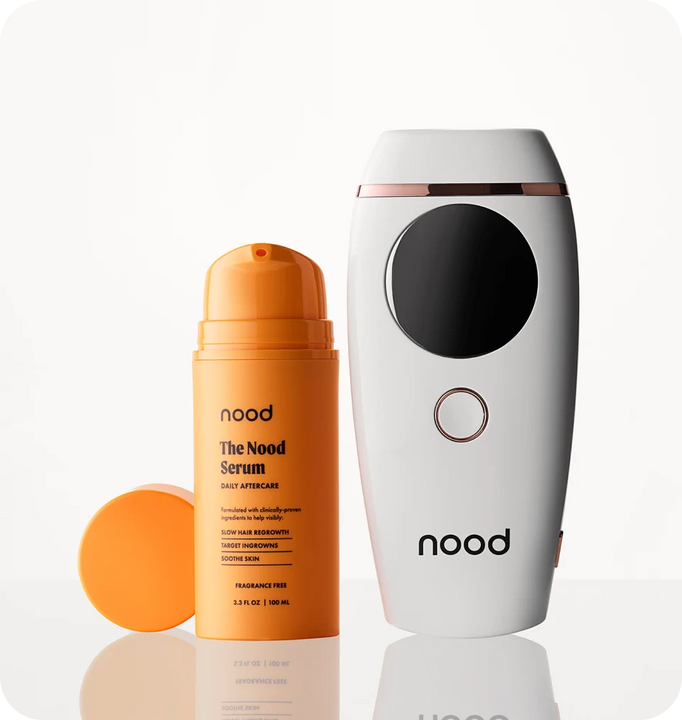
$199.00
Safely remove unwanted hair with The Flasher 2.0 by Nood. Works everywhere that hair grows, including bikini, Brazilian, underarms, legs, and face. Start seeing results in 2-3 weeks and permanent hair removal in 6-8 weeks. … read more
2. Laser Hair Removal
Laser hair removal is as close as you’re going to get to permanent hair removal without setting aside the time and cash for electrolysis. Results vary from person to person, but most will tell you they can stay hair-free for years before needing a touch-up.
Fast Facts:
- Laser hair removal works by targeting pigment at the hair follicle with a heated laser. That’s why it works best when there’s a good contrast between your hair and skin tone.
- A session can last just a few minutes for a small area, like facial hair, to about an hour, for larger areas like your full legs.
- How many sessions you’ll need depends on your hair growth, the body part targeted, even your hormones.
Is It DIY-Friendly?
The Tria is only true laser hair removal device for at-home use. Otherwise, you’ll have to hit the salon (costs range from $1,000 up).
For Best Results:
- Don’t skip sessions. Laser hair removal won’t get every single hair follicle in one go, thanks to those pesky hair growth cycles.
- Shave before each treatment. That makes it easier for the laser to “see” your hair follicles. Exfoliating helps with preparation, too, eliminating ingrown hairs.
- If your is super sensitive, talk to your provider about pain relief for any discomfort you might feel. Some describe the pain of laser hair removal like the feeling of a rubberband snap.
The Revealer

$39.00
The Revealer Daily Exfoliating Cleanser with resveratrol, papaya enzymes, biodegradable exfoliating beads, and botanical extracts is a deep cleansing and skin resurfacing treatment packed with powerful antioxidants for brighter, smoother, and softer skin. Reduce irritation and ingrown hairs while revealing… read more
3. Electrolysis
Electrolysis is the only true permanent hair removal method out there. It works by sending an electric current through a fine probe down to the hair follicles. This damages the follicle enough that it can no longer grow new hair in that area of your body.
Fast Facts:
- Electrolysis can work on all skin types and all hair types. That includes darker skin tones.
- You’re going to feel this one. Most say electrolysis is pretty painful.
- You won’t enjoy those permanent results after just one session. How many sessions you’ll need depends on the body part you target. That can get expensive.
Is It DIY-Friendly?
No, you’ll need to see a dermatologist or electrologist for your treatments. You can’t do electrolysis at home.
For Best Results:
- See a board-certified practitioner for treatment. You don’t want to mess this one up.
- Talk to your electrologist about managing pain during your treatment. They may recommend a topical cream.
- Pre-care may include avoiding caffeine, exfoliating, or shaving before your treatment. Follow any given instructions.
4. Prescription Creams
The chemicals in FDA-approved prescription creams like Eflornithine (brand name Vaniqa) slow down regrowth wherever you use them. Once you stop using them, the hair grows back.
Many women with hirsutism (male-pattern hair growth in women, a common symptom of PCOS) swear by them, but that’s not what we’d call permanent hair removal.
Fast Facts:
- Prescription creams don’t remove existing hair. You’ll still need to shave, wax, etc. to get rid of hair you already have beforehand.
- Some of the creams have a medicated scent, but it’s nothing like depilatory creams.
- Talk to your primary care physician or dermatologist if you’re interested in trying these out.
Is It DIY-Friendly?
You can layer on a prescription cream from the comfort of your own home, but it’s important that you watch for skin sensitivity.
For Best Results:
- Follow the instructions on the box to the letter. If you’re supposed to lather it on twice a day, do that.
- Be patient. Most don’t report any results until they’ve used the product for at least a month. By that time, you should notice overall hair reduction.
- Report any side effects to your doctor. That includes rashes, itching, excessive dryness, acne, or swelling.
Worried about the skin effects of topical treatments? IPL devices actually help skin issues like acne and fine lines — just one more reason it’s the way we like to share our Noods.
5. Waxing
Much like plucking, tweezing, or threading, waxing works by pulling hair at the hair root. Wax is applied to your skin and then rapidly removed, resulting in smooth skin (and sudden yelps).
You’ll have longer-lasting results than you would with shaving, but it’s not actually permanent hair removal.
There is some evidence that waxing may lead to finer regrowth over time. The thing is, some of the studies available looked at patients who had those results after waxing, but before subsequent laser hair removal treatments.
Maybe you’re asking yourself why you wouldn’t just sign up for laser treatments or just-as-effective at-home IPL. Same.
Fast Facts:
- A good wax could last anywhere from 3 to 6 weeks.
- Hair doesn't grow back any thicker after waxing. At worst, it’ll grow back just as it did before you started waxing.
- You can wax most body parts, from large areas like your legs to upper lip hair and your biking line.
Is It DIY-Friendly?
Waxing takes some practice to get it right, but it can be done with at-home kits. It can also be painful as heck. Pulling hair at the root with hot wax isn’t a pleasant experience.
For Best Results:
- Apply wax and your waxing strip in the direction hair grows. Pull the strip in the opposite direction.
- Don’t wax damaged or sensitive skin. Skip the wax if you have a sunburn, any open sores, or recently had a cosmetic treatment that left your skin more sensitive.
- Be gentle with your skin after a wax. Use a topical aftercare product to soothe your skin and reduce any skin irritation or other side effects.
The Reviver

$39.00
The reviver contains our custom formulation of aloe vera, lavender, azulene, and green tea extract to soothe and protect your skin after your IPL treatment. Aloe and Azulene soothe and reduce irritation due from sunburn, chemical peels and IPL treatments. Lavender essential oils… read more
Avoid Depilatory Creams
The main ingredients in depilatories weaken hairs so you can then wipe them away. You spread the creams onto your legs, underarms, or wherever else you’re targeting, leave the solution on for a few minutes, and wipe or rinse the cream away when your time is up.
The results don’t last for long.
Depilatory creams remove hair at the shaft, not the root, so they’re essentially a step above your regular shaving routine.
Fast Facts:
- Results last longer than shaving, but may still only last for a few days.
- You don’t have to worry about nicks and cuts, since there are no razors involved.
- Some people are sensitive to the chemicals in depilatory creams. Don’t assume you’re go to go without a patch test.
Is It DIY-Friendly?
Depilatory creams are easy to use at home. The odor can be pretty off-putting, though. We’d compare it to a wet dog with a side of rotten eggs.
For Best Results:
- Try a test patch before applying depilatories to sensitive skin. Some users experience reactions if they’ve never used the creams before.
- Stop using the cream if your patch test results in any stinging or irritation. It doesn’t mean the hair removal cream is working hard; the discomfort means you should try another method of hair removal.
- Don’t leave depilatory creams on longer than directed or you could put yourself at risk for blistering or a chemical burn
View this post on Instagram
Sources
- What is the structure of hair and how does it grow?
- Self-inflicted chemical burns caused by depilatory cream use: The price of beauty
- Effect of Wax Epilation Before Hair Removal With a Long-Pulsed Alexandrite Laser: A Pilot Study
- Hirsutism: diagnosis and treatment
- Hair Removal Practices: A Literature Review

